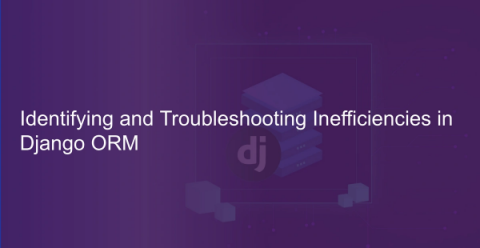Systems | Development | Analytics | API | Testing
Latest Posts
WebAssembly (WASM): Opportunities for Ruby Developers
Most websites are built with high-level languages like Ruby. Developers can always optimize their code for improved performance. Yet, even with top-notch optimization practices, what if your website still lags? How could WASM help improve the performance (time and speed) of your Ruby apps? Web Assembly is a technology that allows developers to compile code written in languages other than Javascript and run it on the web browser.
Overcoming the Cold Start Challenge with Gunicorn Workers in Python in Django Applications
Performance metrics in computer science are typically based on time and space complexity. Time complexity deals with the application's execution time, while space complexity pertains to the memory it consumes during execution. For Django, performance relates to the speed at which a server processes user requests and returns results. The quicker the response, the better the user experience.
Identifying and Troubleshooting Inefficiencies in Django ORM
The Python web framework Django is an excellent choice for building performant web apps. Disqus, Pinterest, and Instagram are all built on a Django foundation. Django offers simplicity, flexibility, reliability, scalability, and all the tools you need to build a web app from admin to authentication to ORM. But this “batteries included” approach has disadvantages. It can hide a lot of the true complexity of an app from developers. Django ORM is a great example.
What To Expect From Ruby 3.3
Ruby, the all-time popular programming language from Japan, has continued to evolve with each iteration, empowering developers worldwide to build powerful and elegant applications. As the community eagerly awaits the release of Ruby 3.3, there is a lot of excitement around the potential enhancements and features that this version promises to bring.
Efficiently Managing Ruby Memory Usage
Even the most prominent and reliable frameworks are notorious for burning out resources if not configured perfectly. In this post, we are about to take a look at how Ruby, one of the most prominent programming languages and an awesome web application alternative when combined with Rails, manages memory, and how you can make it perform even better. Ruby is a scripting language built for use in web applications and similar stuff.
Unlocking the Power of Lambdas in Ruby
Lambdas are a powerful feature of the Ruby language. They allow you to wrap logic and data into a portable package. In this post, we’ll cover how and when to use lambdas. You'll also learn about the difference between lambdas and Procs, and the performance profile of lambda functions. The code examples have been tested with 2.6 and 2.7 and should work with most modern Rubys. Use the links below to skip ahead in the tutorial.
Getting Started with Flask: A Python Flask Tutorial
Flask is Python’s most popular web application framework. Using Flask, you can establish a strong foundation for a full-stack application, opening up frontiers for a more extensive, feature-rich website and allowing you to exercise full control over serving your web pages and over the internal data flow. At the end of this post, you will know enough to be able to create a basic web application using a Flask server. Let’s get started!
Solid Software Design Principles
In this article, we will see SOLID principles and how to implement those principles while building a software application. Robert. C. Martin (popularly known as Uncle Bob) introduced the SOLID principle. Later, Michael Feather re-orders the principle to form the acronym. It helps to implement better code design, maintainability, and extendability.
Services Oriented Architecture (SOA): Principles, Benefits, and Implementation
In this world of technology, meaningful and understandable software can be controlled easily. While designing the application's architecture, loose coupling between the services is necessary, meaning services should behave as a standalone application. This kind of architecture is called service-oriented architecture because, in this architecture design, we mainly focus on designing separate services and using them to make the whole application.











